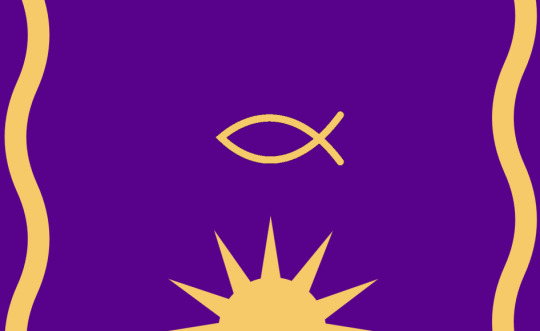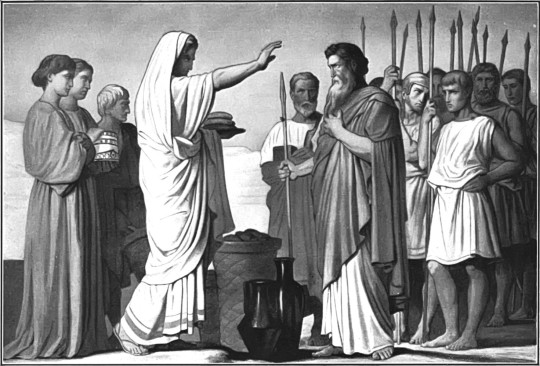#gnostic symbolism
Explore tagged Tumblr posts
Text

Emblemata Nova || Circa 17th century. More info
#old art#illustration#art#occult#witchy things#engraving#gothic#alchemy#symbols#esoteric art#esoteric engraving#esoterica#esoteric#esoteric witch#Gnosticism#hermetic witchcraft#hermetic#artwork#ancient#old Magic#old gods#etching#block print#witchcraft#witchy#ceremonial magic#masonry#secret society#occult engraving#arcane
47 notes
·
View notes
Text

#my faves#my favorite#artwork#art#gnosticism#esoteric#dark psychedelia#myth#animals#snake#rodent#gnostic christianity#never stop the madness#dark#dark art#thanatos#poison#thanatophilia#venomous snakes#allegory#symbols
11 notes
·
View notes
Text
my take on p's eye color differing from carlo's is very simple and called: he was first awakened by the blue fairy :)
#lies of p#lies of p pinocchio#sophia monad#it also goes with sophia being symbolically his mother#between the aforementioned first awakening him (giving him life?) the book character inspiration and of course. the pietà#oh and also the gnostic sophia who she was obviously named after being seen as the 'mother of life'#cue: he has his mother's eyes :)#(just like carlo probably :P)#note. this is all in terms of like. symbolically. just so we're in the clear#it also feels good in terms of matching with final change on his appearance being also brought upon by sophia... like matching bookends....
45 notes
·
View notes
Note
komaeda wouldnt be catholic he would be gnostic christian i refuse to believe in a context where he is christian specifically that he wouldn’t believe there is a lesser god (which is in control of reality and is despair) compared to the true god that is a personification of the abstract (hope) and quite literally unfathomable. sorry i feel really strongly about philosophy and that’s tied heavily into religion due to metaphysics so i had to say it
that's fair. i just went catholic for the aesthetics
#ask#calliphone#priest au#that au is not inspired by much character analysis nor do i have the religious knowledge to know what sect of christianity komaeda would be#most likely to follow#i simply like stained glass cathedrals and confessions and symbolism and bible verses and baroque art and sodomy#gnostic christianity does sound applicable to him but afaik it's only catholicism that consumes the blood and body of christ#and if i want to draw kmda pouring wine into hnta's mouth . well. i gotta go catholic then don't i
12 notes
·
View notes
Video
Hermanubis or Abraxas or ? (a Roman limestone relief) [3rd century AD] by Peter Via Flickr: Hermanubis or Abraxas or ? (a Roman limestone relief) [3rd century AD] - Christie's A wolf- (or dog-)headed deity on this Roman limestone relief from the 3rd century AD, depicting some form of offering scene. A syncretic, hybridised deity, taking up characteristics from different deities: a wolf head, crowned with sheaves of wheat, and holding a key, the snake-like legs perhaps more an indicator of the cosmic warrior god Abraxas (but Abraxas is usually represented with the head of a lion or cock, together with sword and shield) the rest of the god is human, clothed in animal skin; in his right hand, he holds a key, and in his left hand, a caduceus and sheaves of wheat (the caduceus is an attribute of Mercury, together with the ram depicted on the left), and also some 'poppies' (healing quality? pain reliever ! hypnotic !). A bearded man kneeling at the right, presenting a loaf of bread on an offering table, its support with a lion head and a feline paw. Finally we do not know what kind of deity we are dealing with here: wheat, key, caduceus, poppies,... - does seem to be rather benign: fertility and prosperity? and the offering is also rather harmless: a load of bread. And it seem to be unkown where the stele was found). Text modified after Ralph Haussler: Wolf & Mythology ralphhaussler.weebly.com/wolf-mythology-italy-greek-celti... Photo from Christie's: www.christies.com/lotfinder/Lot/a-roman-limestone-relief-...
#cuno-wolf#lupus#Lycaon#Anubis?#deity blend#symbolism#canine/lupine headed#gnostic#pantheistic#Abraxas?#Hermanoubis?#Greco-Egyptian#romanised#pillar/stele#wheat#caduceus#poppies#ears#capsule#key#Christ#treading#trampling#lion#dragon#basilisk#aspis#warrior#flickr
7 notes
·
View notes
Text

Jeśli dusza nie jest obrazem mądrości kosmicznej, to czy jest w takim razie skowytem z piekła? (☉)
#alchemy#occult#esoteric#mysticism#symbolism#hermeticism#ouroboros#sacredgeometry#magic#gnosticism#arcane#ancientwisdom#philosophersstone#ritual#alchemicalart#spiritualart#divination#enigmatic#occultart#medievalart
18 notes
·
View notes
Text
i would spiritualise anything
#don’t forget i’m not an atheist. just atheist-sympathetic. and agnostic in the sense that God is unknowable (a-gnostic: not knowing)#so there’s no guy with a beard. probably no heaven or hell in the culturally christian sense. but there is Something#it’s a force. a web. a pattern. a thread. an energy field. a consciousness#i believe in coincidences and fate to an extent and signs from the universe and#tarot cards and correspondences and urban legends and the power of symbolism#that’s why all this stuff (you know what stuff!) is seriously freaking me out. in a good way ofc. makes life more exciting#kitty.txt
9 notes
·
View notes
Text
i likely won't get into genshin but it's probably for the best. bc from what i know abt the lore and world etc i will become the most annoying person in the world if i did
#like all the kabbalah and gnosticism stuff. so many things being named in hebrew or inspired by jewish mythology. etc#also symbolism. i love symbolism#my husband often shows me theory videos abt it that i don't understand at all but i do understand the context of. does that make sense#like the most recent one he showed me was abt childe being the embodiment of daat or smth like that#and while idk much abt him. i do know quite a bit abt daat! so ig i do know some stuff abt him too as a result.#annoying to see goyische english speakers write these theories and get the little details and pronunciations wrong tho :P#but anyway yeah gi mutuals if you have questions abt terms like this i'm happy to help find answers to them.
3 notes
·
View notes
Text

Flag of the Kingdom of Osroene (if it did convert to Gnostic Christianity through Bardaisan)
#flag design#fictional flag#original flag#flags#vexillology#purple and yellow#purple and gold#ichthys#gnostic christianity#purple flag#gold and purple#ichthys symbol#history#osroene
6 notes
·
View notes
Text

Oh
#once again I sit here going ''how the FUCK did I manage this'' because I was looking into shit for Hell's Compass#I don't look into gnosticism that much I had no idea this was a thing#how do I keep fucking doing this I just say random shit for character names and find out I hit the symbolism on the head#I'm not even fucking kidding I really don't know much of anything about this stuff anymore I'm starting from square one
2 notes
·
View notes
Text
"The Mystical Odyssey: Exploring 'The Chaldæan Oracles of Zoroaster' by W. Wynn Westcott"

W. Wynn Westcott's "The Chaldæan Oracles of Zoroaster" is a profound journey into the mystical realms of ancient wisdom, offering readers a glimpse into the esoteric teachings of the Chaldeans and the enigmatic Zoroaster. In this one-page book review, we will delve into the key facets of this enlightening work.
Westcott, a respected scholar and practitioner of the occult, presents a meticulous exploration of the Chaldæan Oracles, a collection of mystical and philosophical texts attributed to the legendary Zoroaster. The book's primary strength lies in its meticulous research and deep reverence for the subject matter. Westcott's expertise in esotericism is evident throughout, making this volume a valuable resource for both scholars and spiritual seekers.
The book opens with an insightful introduction that sets the stage for the reader, providing historical context and elucidating the significance of the Chaldæan Oracles. Westcott's prose is scholarly yet accessible, ensuring that readers of varying backgrounds can engage with the material.
One of the most captivating aspects of this work is its exploration of the profound spiritual and metaphysical concepts contained within the Chaldæan Oracles. Westcott deftly unpacks these teachings, offering interpretations that shed light on their relevance to contemporary spiritual and philosophical discourse. This approach allows readers to not only grasp the ancient wisdom but also to contemplate its implications for their own spiritual journeys.
"The Chaldæan Oracles of Zoroaster" is not merely a scholarly endeavor but also a guide for spiritual seekers. Westcott delves into the practical applications of the Oracles, providing insights into rituals, meditations, and practices that can aid individuals in their quest for spiritual enlightenment. This pragmatic dimension of the book adds depth and utility to its scholarly foundation.
However, some readers may find Westcott's language and style somewhat archaic, given that the book was written in the late 19th century. While this lends an air of authenticity to the work, it can be a minor obstacle to modern readers seeking a more contemporary exploration of the subject matter.
In summary, "The Chaldæan Oracles of Zoroaster" by W. Wynn Westcott is a valuable contribution to the study of ancient mysticism and esotericism. It not only preserves the wisdom of the Chaldeans and Zoroaster but also offers profound insights into their teachings' enduring relevance. For those with a genuine interest in the esoteric and a willingness to delve into the depths of ancient wisdom, this book is a treasure trove of knowledge and contemplation. Westcott's dedication to preserving and elucidating these mystical texts ensures that this work remains a timeless classic in the realm of esoteric literature.
W. Wynn Westcott's "The Chaldæan Oracles of Zoroaster" is available in Amazon in paperback 9.99$ and hardcover 17.99$ editions.
Length of the Book: 85 pages
Language: English
Rating: 8/10
Link of the book!
Review By: King's Cat
#Chaldæan Oracles#Zoroaster#Mystical Philosophy#Occult Knowledge#Ancient Wisdom#Hermeticism#Esoteric Texts#Neoplatonism#Spiritual Enlightenment#Metaphysical Teachings#Divine Wisdom#Ancient Mysteries#Gnostic Insights#Theurgy#Sacred Symbols
1 note
·
View note
Text
Benefits of Belonging to the illuminati
It is no coincidence that all world leaders have vast networks of wealth. There are no poor kings, queens, or presidents. Even the pontiffs are richer than most on this planet. The lack of need for money removes many of its threats: someone with wealth costs more to bribe than someone else, and this financial clarity is necessary to effectively manage your planet.

#illuminati#conspiracy theory#secret society#symbolism#eye of providence#freemasonry#occult#new world order#pyramid#hidden knowledge#esoteric#ancient wisdom#mysticism#spiritual awakening#shadow government#enlightenment#global elite#mystery#arcane#alchemy#power#control#secrecy#covert operations#historical intrigue#cultural symbolism#paranormal#metaphysics#alternative history#Gnosticism
0 notes
Note
Have you ever seen the show Revolutionary Girl Utena, and if so, thoughts?
Hmmm, funny you should mention that. I haven't seen it and don't plan to – it's got a few too many squicks for me – but I've read some meta. I don't think I can say I know it well enough to really talk about, though.
#the symbolism gnostic themes and pivotal moments in lesbianism intrigue me#it went off with the prince-princess thing and the literally drawing a sword from your gf's chest also#unfortunately it shall have to remain a show i go 'ah. so it's like that is it?' at from a distance#answerin' stuff
0 notes
Text
Literally forgot what name I gave to the durge in Wrestling's timeline 👍
#can't remember if i named her Lucia or if that was a fever dream#because I may have also named her Lilith#but you know what let's continue the gnosticism symbolism#if 'Osob' is the demiurge who hates all gods (first because he thinks he's Osob and Osob believes that all gods are propaganda#and only The Unknowable One is a true god)#(then out of habit i guess. like he's already at it why should he change his opinion just because he isn't Osob?)#then at least someone in this place SHOULD actually subscribe to Bhaal and his gnosticism speedrun#so it has to be her#meaning she has to have the name of a gnostic figure who's seen positively#so I'm thinking Norea?
0 notes
Text
Melchizedek

View On WordPress
#Bible#Dead Sea Scrolls#Events#Freemasonry#gNOSTIC#God#Jesus#Melchizedek#Messianic#Mystical#Symbolism#Theological#Theophqany#Ugaritic mythology#Ugaritic texts
1 note
·
View note
Link
The pseudo-academic establishment
#gnosticism#occult#cults#Mithraism#oligarchy#Gnostic Gospels#Nag Hamadi#irrationality#Luciferianism#symbolism
1 note
·
View note
![Hermanubis or Abraxas or ? (a Roman limestone relief) [3rd century AD]](https://live.staticflickr.com/962/41973785102_63b65f1141_b.jpg)